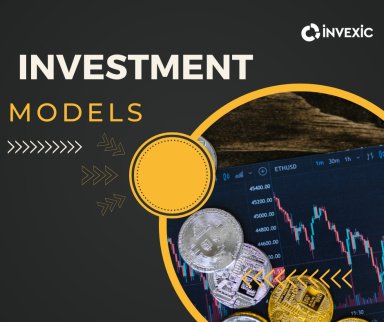
Originally published: 05/01/2023 16:09
Publication number: ELQ-13948-1
View all versions & Certificate
Publication number: ELQ-13948-1
View all versions & Certificate

Investment Models
Investment Models specify the modes in which funds are invested in specific assets through which income is generated. A first-hand understanding on investment.
Our mission is to be a top professional services firm by adhering to our core values which is integrity, objectivity, professional competence, development and maintenance of technical expertise and coFollow
Description
Before we begin to describe the various types of investment models in existence, one must understand the basic definition of investment and the factors that govern it.
In simpler terms investment means the exchange of money for a profit-yielding asset. The same profit earned is used to invest in other assets as well. As far as the economic well-being of the country is concerned, investment is important as it contributes to growth and development.
When the government invests in a business, agriculture, manufacturing, or supporting industries it can generate employment opportunities for its population. But a robust investment scenario is when the government and the private sector join hands to create investment opportunities.
Also keep in mind that the following factors come into play when making an investment and by proxy, choosing an investment model:
Savings Rate.
Tax Rate in the country. (Net income available after tax).
Inflation.
Rate of Interest in Banks.
Possible Rate of Return on Capital.
Availability of other factors of production – cheap land, labor, etc and supporting infrastructure – transport, energy, and communication.
Market size and stability.
The following are the major investment models
Public Investment Model: In a Public Investment Model, investments in specific goods, and services are made by the government through the central or state government or with the help of the public sector by using the revenue earned through it.
Private Investment Model: As is the case with India, there are times when the earnings from the public sector are not enough to make up for certain shortfalls that may come about. Thus the government invites private players to invest in some of its ventures. This investment can be domestic or foreign in nature. Foreign direct investment (FDI) can improve the current infrastructure and generate employment in the process. This model is one of the most sought-after when it comes to external investment.
Public-Private Partnership Model: A public-private partnership (PPP, 3P, or P3) is a cooperative arrangement between two or more public and private sectors, typically of a long-term nature. The following sectors in India have been having projects based on the PPP model:
Health Sector
Power Sector
Railways
Urban Housing
There are additional investment models as well. They are as follows:
Domestic Investment Model: Can be a Public or a Private-Public Partnership venture
Foreign Investment Model: It can be a majority foreign or foreign-domestic mix
Sector-Specific Investment Models: Where investments are made in Special Economic Zones or other allied sectors
Cluster Investment Models: Investment in Manufacturing Industries is an example.
Before we begin to describe the various types of investment models in existence, one must understand the basic definition of investment and the factors that govern it.
In simpler terms investment means the exchange of money for a profit-yielding asset. The same profit earned is used to invest in other assets as well. As far as the economic well-being of the country is concerned, investment is important as it contributes to growth and development.
When the government invests in a business, agriculture, manufacturing, or supporting industries it can generate employment opportunities for its population. But a robust investment scenario is when the government and the private sector join hands to create investment opportunities.
Also keep in mind that the following factors come into play when making an investment and by proxy, choosing an investment model:
Savings Rate.
Tax Rate in the country. (Net income available after tax).
Inflation.
Rate of Interest in Banks.
Possible Rate of Return on Capital.
Availability of other factors of production – cheap land, labor, etc and supporting infrastructure – transport, energy, and communication.
Market size and stability.
The following are the major investment models
Public Investment Model: In a Public Investment Model, investments in specific goods, and services are made by the government through the central or state government or with the help of the public sector by using the revenue earned through it.
Private Investment Model: As is the case with India, there are times when the earnings from the public sector are not enough to make up for certain shortfalls that may come about. Thus the government invites private players to invest in some of its ventures. This investment can be domestic or foreign in nature. Foreign direct investment (FDI) can improve the current infrastructure and generate employment in the process. This model is one of the most sought-after when it comes to external investment.
Public-Private Partnership Model: A public-private partnership (PPP, 3P, or P3) is a cooperative arrangement between two or more public and private sectors, typically of a long-term nature. The following sectors in India have been having projects based on the PPP model:
Health Sector
Power Sector
Railways
Urban Housing
There are additional investment models as well. They are as follows:
Domestic Investment Model: Can be a Public or a Private-Public Partnership venture
Foreign Investment Model: It can be a majority foreign or foreign-domestic mix
Sector-Specific Investment Models: Where investments are made in Special Economic Zones or other allied sectors
Cluster Investment Models: Investment in Manufacturing Industries is an example.
This Best Practice includes
Excel






